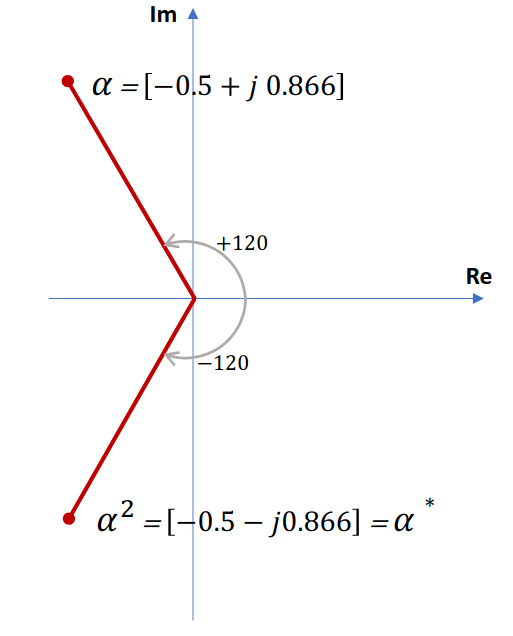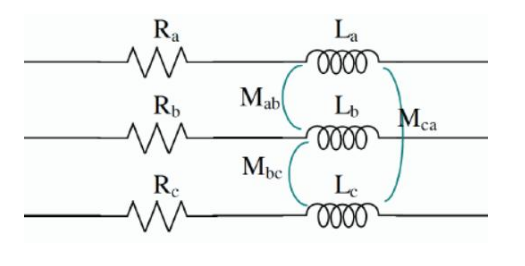Three Phase Symmetrical Components
What Are Symmetrical Components?
Imagine you have a three-phase electrical system that’s “unbalanced” - meaning the three phases don’t have equal magnitudes or aren’t perfectly spaced 120° apart. This makes analysis very complicated!
Symmetrical components is a clever mathematical trick that breaks down any unbalanced 3-phase system into three simpler, balanced systems that are much easier to work with.
The Three Components
Any unbalanced system can be split into exactly three balanced components:
- Positive Sequence (
) - Rotates in the same direction as the original system - Negative Sequence (
) - Rotates in the opposite direction - Zero Sequence (
) - All three phases are identical (same magnitude and phase)

Understanding the Magic Operator
Before we dive deeper, we need to understand a special mathematical tool called the

Think of
- rotates a phasor by 120° counterclockwise - rotates a phasor by 240° counterclockwise - back to the original position
In rectangular form:
Key property:
The Transformation Equations
Here’s where the magic happens. For any unbalanced system with phases A, B, and C:
Forward Transformation (Unbalanced → Symmetrical Components)
In simple terms:
Inverse Transformation (Symmetrical Components → Unbalanced)
In simple terms:
Worked Example 1: Finding Symmetrical Components
Problem: A 3-phase generator has unbalanced voltages:
Find the symmetrical components.
Solution: Using the forward transformation:
Step-by-step calculation:
- Zero sequence:
- Positive sequence:
- Negative sequence:
Final Answer:
Worked Example 2: A More Balanced System
Problem: Another 3-phase generator has:
Solution: Notice that this system is “almost” balanced - the phase angles are exactly 120° apart, but the magnitudes are different.
Using the same transformation:
Answer:
Key Insight: Since this system is nearly balanced, most of the energy is in the positive sequence component!
Worked Example 3: Reverse Calculation
Problem: You’re given symmetrical components of currents:
Find the actual phase currents.
Solution: Using the inverse transformation:
Step-by-step:
Final Answer:
Power Calculation with Symmetrical Components
Here’s a beautiful property: the total power can be calculated using just the symmetrical components!
For total complex power:
Or in matrix form:
Why is this useful? You can calculate the total power without converting back to phase quantities!
Impedances and Symmetrical Components

Here’s where things get really interesting for power system analysis:
For Simple Loads (No Mutual Coupling)
Each symmetrical component sees the same impedance. This means:
- Apply each voltage component separately to the load
- Calculate the corresponding current components
- Convert back to phase currents using the inverse transformation
For Complex Systems (Transmission Lines, Machines)
The impedances are different for each sequence:
- Positive sequence impedance (
- Negative sequence impedance (
- Zero sequence impedance (
Key Point: This is why symmetrical components are so powerful for analyzing faults in power systems - each type of fault creates different combinations of sequence components!